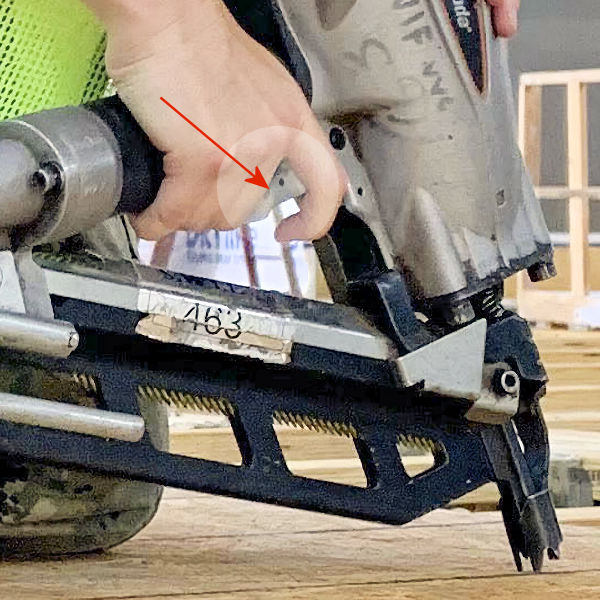Full Sequential Trigger
According to the CDC, over 65% of injuries from contact-trip tools could be prevented through the use of a sequential-trip trigger.
Full-sequential, also called single-shot firing, is ideal for applications such as framing and carpentry, where precision is more important than fastening speed. It is always the safest trigger mechanism for the job because it reduces the risk of unintentional nail discharge and double fires.
To drive a nail, the worker must first depress the trip against the surface and then pull the trigger.
Use full sequential trigger nailers for placement work where the lumber needs to be held in place by hand. Examples include building walls and nailing blocking, fastening studs to plates and blocks to studs, and installing trusses.
Contractor Shot Himself
Unintended nail discharge is more likely to lead to a hand or arm injury for placement work compared to flat work, where the lumber does not need to be held in place by hand. Examples of flat work include roofing, sheathing, and subflooring.
When using a full sequential trigger, there are things you need to remember both when using single nails and multiple nails.
- Single Nail: Push the safety contact and then squeeze the trigger.
- Multiple Nails: Release both the safety contact and trigger and repeat the process.
You may want to consider restricting inexperienced employees to full sequential trigger nail guns starting out. Some contractors using more than one type of trigger on their jobs color-code the nail guns so that the type of trigger can be readily identified by workers and supervisors.
Knowledge Check Choose the best answer for the question.
1-5. Which type of trigger is always the safest trigger mechanism for the job?
You forgot to answer the question!

